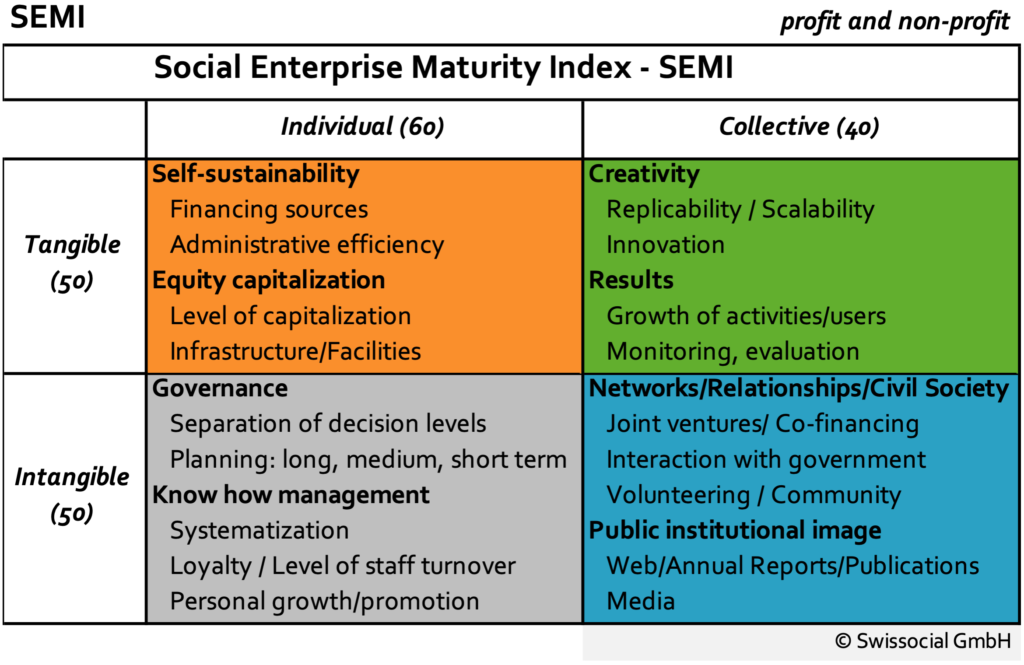Swissocial Methodology for profit and non-profit enterprises:
The Social Enterprise Maturity Index - SEMI
For both profit and non-profit organizations, Swissocial has developed and copyrighted the Social Enterprise Maturity Index (SEMI) methodology. This is applied to institutional development projects, where the primary beneficiaries are the organizations themselves.
The indicators chosen cover the four elements of the Swissocial’s matrix and, depending on the circumstances, can be adapted to the different local conditions/circumstances where the impact evaluation is being carried out.
The SEMI Indicators
Exclusive use for seniors
The SEMI uses eight indicators and 18 sub-indicators, according to the following scheme:

